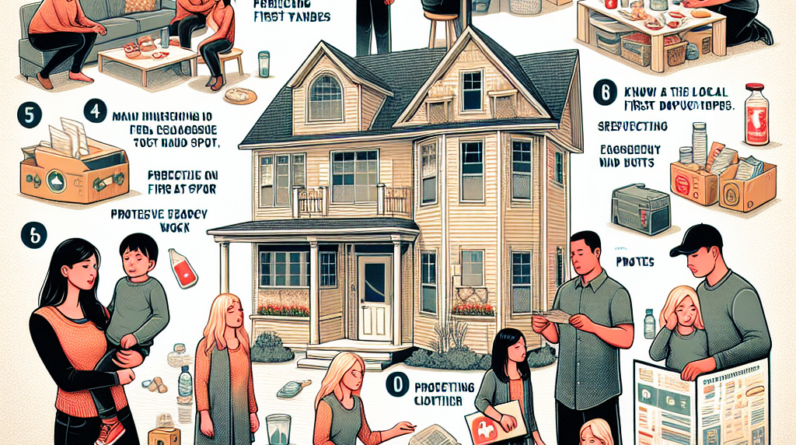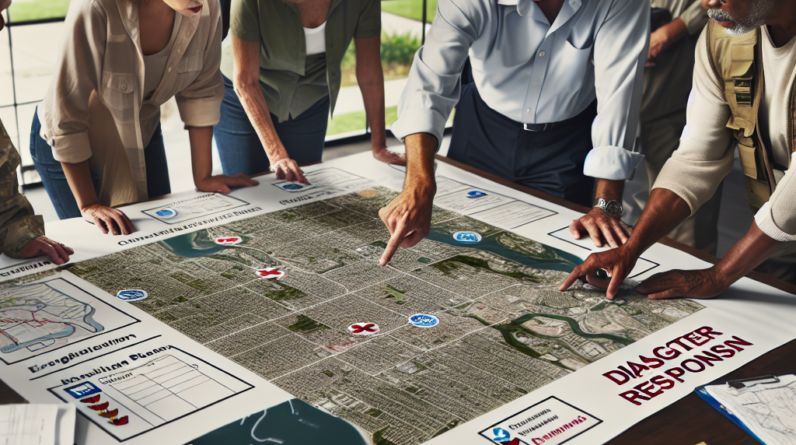Hello! Today we’re diving into a crucial topic—disaster preparedness. In our unpredictable world, being prepared is not just wise; it’s necessary. And guess what? You don’t need to spend a fortune to create an effective disaster preparedness kit. I’ll walk you through some valuable tips I’ve learned to help you prepare on a budget.
Assess Your Needs
# Consider Your Environment
Begin by analyzing the specific hazards that are prevalent in your area. If you live in a region prone to hurricanes, your kit’s contents will vary significantly from those living in earthquake or wildfire areas. Reflect on local weather patterns, wildlife, and any other regional factors that might influence your preparedness needs. This initial step is not only crucial for safety but also cost-effective as it prevents unnecessary purchases.
Think about the seasonal changes in your area and how they could impact your readiness. For example, if you frequently experience power outages, including extra batteries and candles in your kit will be crucial. Effective planning can save money and give you peace of mind knowing you’re well-prepared.
# Evaluate Family Needs
Consider each family member’s specific needs, including children, pets, and any elderly relatives. For instance, the addition of a new baby might require you to add baby essentials to your kit. Remember to include pet supplies, such as food and any special medications, as they are important members of your family too.
Creating a personalized checklist for each person or pet can make this process straightforward and ensure you only gather items that are necessary, avoiding wasteful spending.
# Research Essential Items
Once you understand what you need, it’s time to research and list the essential items for your kit. Initially, you might think it’s just about throwing various items together, but specificity is key. Utilize resources like FEMA’s recommendations to guide your choices.
Look for budget-friendly alternatives when selecting your items; there’s no need to opt for the most expensive options. Prioritize your list to first acquire the most crucial elements, then gradually add other items as your budget allows. This approach helps in spreading out the expenses effectively.
Shop Smart
# Utilize Sales and Discounts
Become a savvy shopper by taking advantage of sales and discounts. Keep an eye on local advertisements, and don’t hesitate to use coupons. This can significantly reduce costs.
When shopping, stick to your predetermined list to avoid impulse buys, which can lead to unneeded clutter. Signing up for store newsletters and loyalty programs can also provide early access to sales, maximizing your savings.
# Buy in Bulk
Consider buying items like water, canned goods, and batteries in bulk. This strategy is cost-effective, especially for non-perishable items. Ensure you have adequate storage space for your bulk purchases to keep your supplies well-organized and accessible.
# Check Out Local Resources
Explore local resources such as community centers or government programs that offer free emergency supplies or workshops. Local food banks and religious organizations often conduct drives where you can obtain or exchange necessary supplies at little to no cost. Collaborating with neighbors or friends for bulk purchases can also be beneficial.
Organize Your Kit
# Use Containers Wisely
Store your disaster supplies in clear, water-resistant containers to easily see and access your items. Labeling each bin according to the type of disaster it’s prepared for can save time and confusion during an actual emergency.
Ensure your containers are waterproof if possible, and consider keeping a small, portable first aid kit readily available for urgent situations.
# Regularly Check and Update
Life changes and so do the contents of your preparedness kit. Set a bi-annual reminder to review and update your kit. Replace expired items, and adjust the contents to fit your current family situation. Keeping your kit up-to-date is crucial for effective disaster response.
# Create a Grab-and-Go Plan
Having a quick-action plan for emergencies is essential. Ensure everyone in your household knows where the kit is stored and how to quickly access it. Practicing a simple evacuation drill can reinforce this knowledge and help maintain calm during stressful situations.
Stay Informed and Engaged
# Follow Local Agencies
Stay updated on local developments by following emergency management social media accounts and subscribing to alert services. This keeps you informed about potential dangers and helps you adjust your preparedness strategies accordingly.
# Join Local Preparedness Groups
Participate in local preparedness groups to gain further insights and share experiences. These groups often offer workshops that enhance your practical skills and preparedness level.
# Stay Updated on Technology
Keep an eye on new technologies and tools that can enhance your emergency preparedness. Apps that provide real-time weather updates and tools that improve emergency response can be particularly useful.
Frequently Asked Questions
1. What should be included in a basic disaster preparedness kit?
A basic kit should contain water, non-perishable food, a flashlight, batteries, a first aid kit, and essential documents. Customize further based on personal and family needs.
2. How often should I check my preparedness kit?
It’s advisable to review and update your kit every six months to ensure all items are functional and relevant.
3. Where can I find budget-friendly supplies?
Look for supplies in discount stores, thrift shops, and during local sales. Also, check community resources for available assistance and supplies.
4. Why is it essential to have a grab-and-go plan?
In emergencies, having a quick evacuation plan can significantly enhance your safety and efficiency.
5. How can I stay informed about local emergencies?
Follow local agencies on social media, sign up for alerts, and engage with community preparedness groups to stay well-informed.


